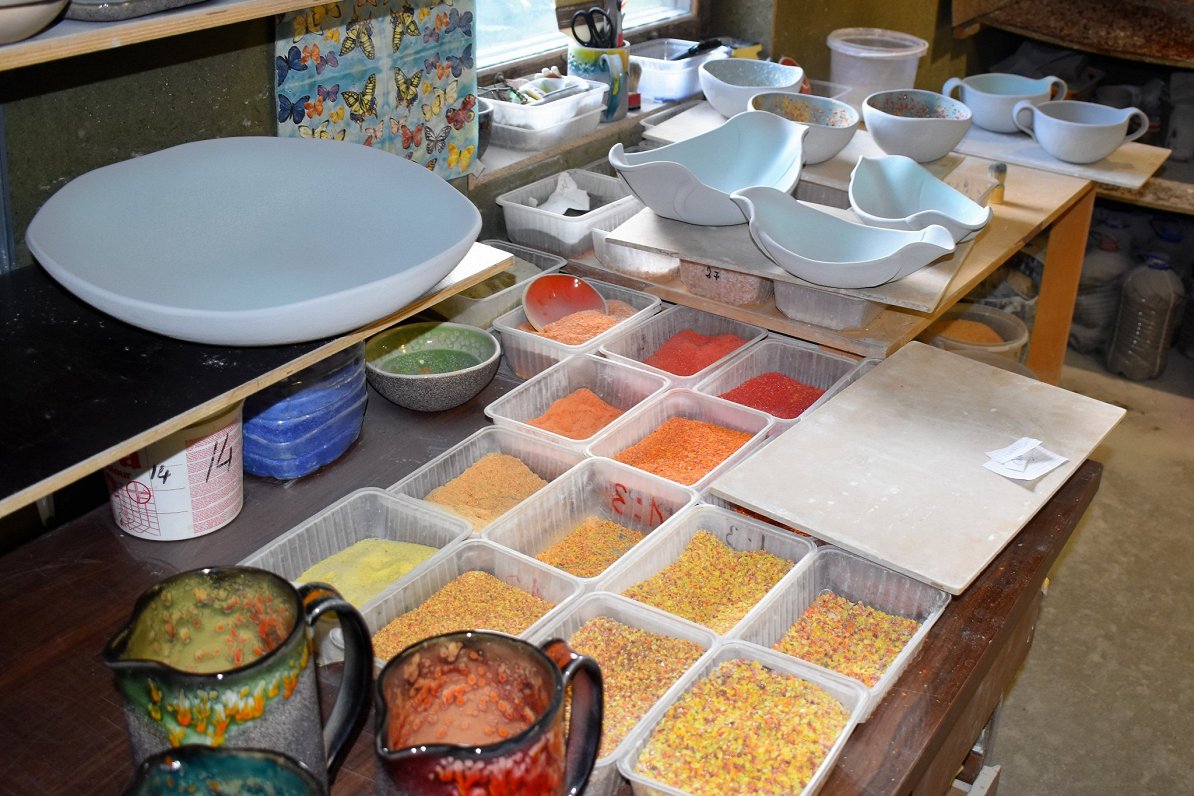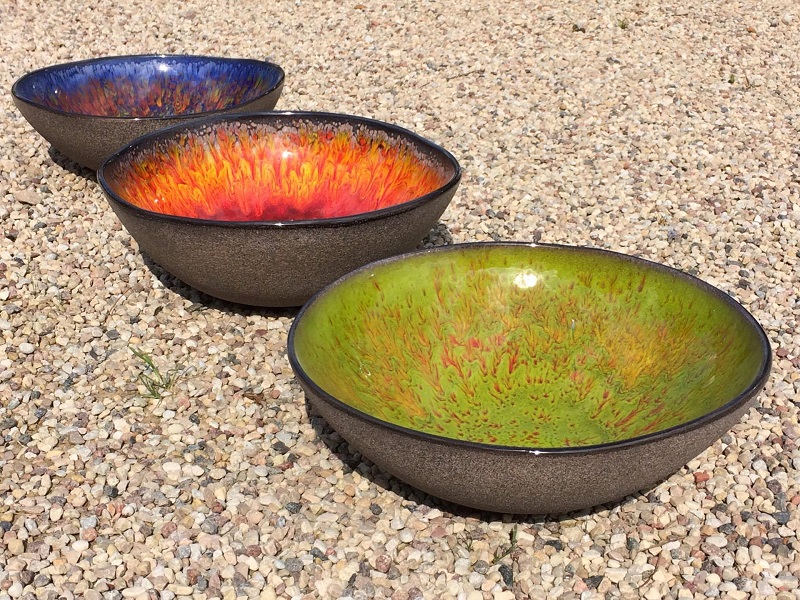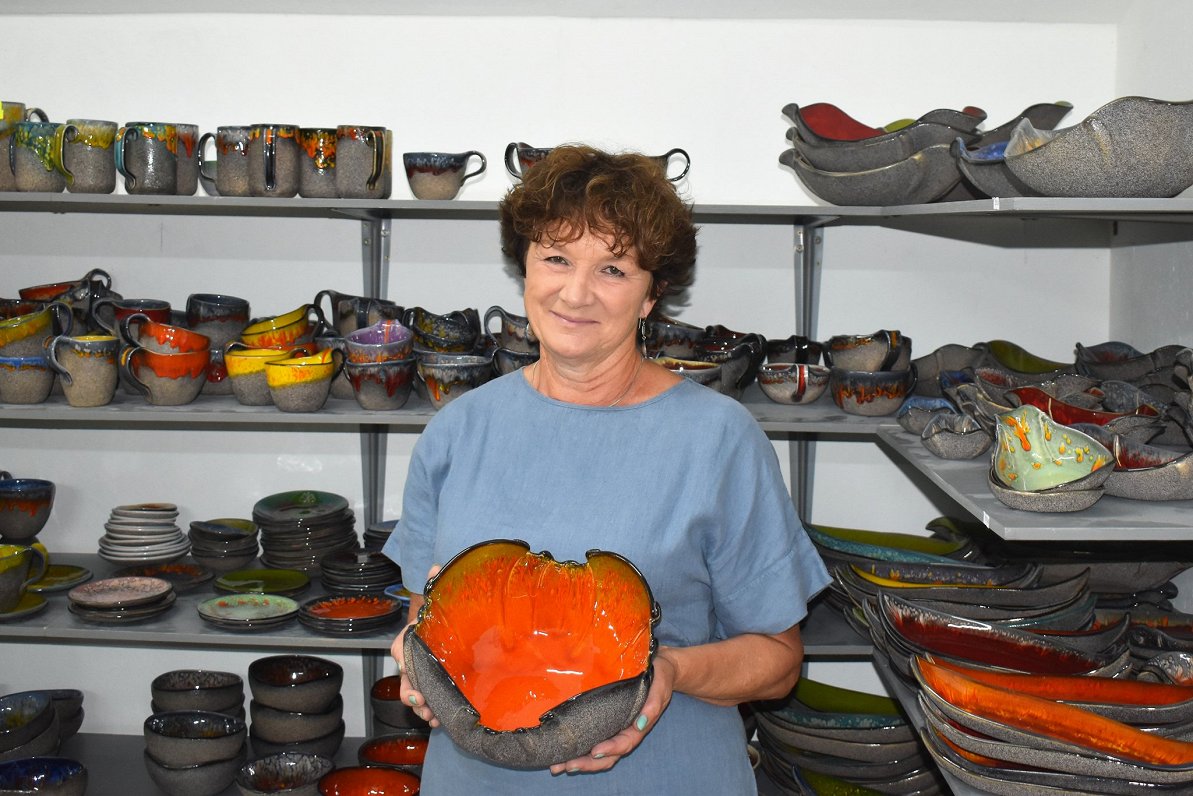From rye bread loaves to birch groves, Latvia may seem like a land where earth tones predominate. But a glimpse of a folk costume skirt or a wildflower-strewn field can instantly brighten up the color spectrum.
Ceramic artist Inta Radziņa uses this contrast to delightful effect at her workshop in Daugmale, a pleasant village by the Daugava River 45 kilometres south of Rīga. And she believes that her works can lift people’s mood, whatever is happening in the world outside.
“It’s all about color and joy!” she says. “I’ve got nothing against black or white, but people always want color, whatever state the world is in.”
For Inta, pottery started out as a hobby. After marrying into a dynasty of basket makers and textile weavers, she felt she should also get busy with her hands, and enjoyed the quick results obtained from working with clay.
In the 1990s, swimming against the vast tide of plastic entering Latvian households, she began teaching pottery to youngsters. Then husband Laimonis lost his job during the global financial crisis, and the family decided to make ends meet by establishing the enterprise Daugmales Keramika. They transformed their garage into a workshop and hawked their wares at fairs, building such a loyal following that today they employ three youthful assistants.
“There just aren’t enough hours in the day to get everything done, and the girls are wonderful,” says Inta.
Laimonis does the paperwork for the business, deals with technical problems and constructed the kiln for the ceramics. He’s clearly a skilled artisan, as evidenced by an elegant natural stone swimming pool in the middle of the forested property. The open-plan, large-windowed home he built in the 1980s feels more Scandinavian than late Soviet.

There are several important historical monuments in the vicinity of Daugmale, including First World War battlefields and an ancient hill fort, where an important trading and crafts center stood a millennium ago. Inta has taken part in many cultural events at the latter site, and her work is based on medieval pottery techniques.
Centuries ago, potters would crush rocks and add the gristle to their vessel to make them fire resistant while cooking. Inta uses a special powder as fine as beach sand to achieve a similar aesthetic, and like her ancient forebears, she uses her hands to shape the items rather than a wheel. Natural pigments and glazing are then added to unique, vivid effect.
As well as plates and bowls, the workshop also responds to customer demand by making figurines, oil lamps and, more recently, butter holders. And Inta keeps a close eye on what colors people seek. This spring, yellow items went like hotcakes. But come summer, refreshing turquoise took over, perhaps as relief from the record heat.
Market forces
Over the years, regulars became accustomed to buying directly at the workshop. Canadian troops stationed in Latvia as part of the NATO contingent were particularly fond of such daytrips to pick up gifts.
The onset of the Covid crisis drastically reduced this personal interaction. Instead, the enterprise boldly entered the digital realm. Properly packaged and insured, there’s no reason why ceramics can’t be sent by mail or courier.
“At Christmas, Facebook worked superbly,” says Inta. “You think that Latvia is so small that everyone already knows about you, but that isn’t the case.”
Over the years, they have made a name for themselves at major European crafts festivals. This year, events in Italy and France were cancelled at the last minute due to pandemic restrictions. But the van is packed for a trip to Germany and Austria.

Smaller fairs in Latvia have restarted this summer, though large gatherings like the annual crafts weekend at the Open Air Ethnographic Museum are still grounded. But Inta says they hope to attract visitors back to the workshop by taking part in a “home restaurant” festival in September.
If the food is as good as the crockery, it should be a meal to remember.
































